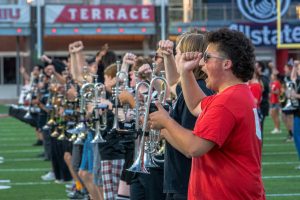Making NIU accessible
October 28, 2003
NIU tries to take care of its handicapped students.
Most buildings on campus are accessible, and others are being made accessible, said Nancy Kasinski, director of the Center for Access Ability Resources.
“There are basic codes for accessibility that have to be met,” she said. “Entrances have to be accessible through ramps, and water fountains and bathrooms have to be accessible.”
If a building is not sufficiently handicapped accessible, classes have to be moved to another location. There are some buildings that do not allow complete accessibility.
“There are one or two buildings on campus, such as Still Hall or Gilbert Hall, that might never be completely accessible, because they are too old,” Kasinski said.
Some residence halls also are only partially accessible.
“The Lincoln Hall and Douglas Hall residence halls are accessible to the main floor from a ramp, but the other floors can only be reached by climbing the stairs,” she said. “They just weren’t made to be accessible when they were first built.”
Buses also have to be handicapped accessible. If a university has a bus system, it is required for there to be a para-transit system for students who cannot access the bus, Kasinski said.
“Even though the Huskie buses have lifts to aid people with handicaps, people that use wheelchairs can get onto the bus but often can’t get off, due to the clutches that lower the lift,” she said.
Handicapped accessibility helps to aid people without permanent handicaps as well.
“When students are on crutches because of a broken leg, it’s always easier to go up a ramp than a flight of stairs,” Kasinski said.






